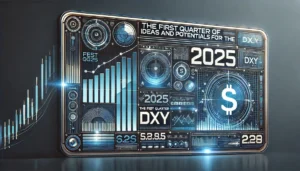If you’re new to the world of trading, you’ve probably heard the term “trade signal” thrown around a lot. But what exactly is a trade signal? In short, a trade signal is an indication that it might be a good time to buy or sell a particular security. Trade signals can come from various sources, including technical analysis, news events, or even other traders.
In this blog post, we’ll take a closer look and how they can help you make better decisions when trading. We’ll also discuss some of the different types of trade signals and how to interpret them. So without further ado, let’s get started!
What is a Trade Signal?
As we mentioned earlier, a trade signal is simply an indication that it might be a good time to buy or sell a particular security. This could be based on technical indicators, news events, or even other traders. For example, let’s say that you’re watching the price of EURUSD currency pair. You notice that the price has been steadily rising for the past few days, and you believe that it might continue to rise. However, just before the price reaches your target level, it starts to fall sharply. At this point, you might interpret this as a bearish reversal signal and decide to place a sell trade for EURUSD.
Types of Trade Signals
There are two main types: bullish and bearish. Bullish signals indicate that the price of a security is likely to go up, while bearish signals indicate that the price is likely to go down. However, it’s important to note that not all signals are created equal. Some signals are more reliable than others, and some may be more suited to your trading strategy than others. As such, it’s important to do your own research and understand the different types of trade signals before making any trading decisions.
Here are some of the most common types of trade signals:
Price action patterns: Price action patterns are formations that can be seen on a price chart. These patterns can give traders an indication of where the price is likely to go in the future. Common examples include head and shoulders patterns, double tops/bottoms, and triangles.
Technical indicators: Technical indicators are mathematical calculations that are used to predict future price movements. Common technical indicators include moving averages, Bollinger Bands®, MACD (moving average convergence divergence), and RSI (relative strength index).
Fibonacci retracements: Fibonacci retracements are horizontal lines that are drawn at certain percentage levels based on the Fibonacci sequence. These levels can act as support or resistance levels and may give traders an indication of where the price is likely to go in the future.
News events: News events can have a big impact on prices, and as such, they can provide traders with valuable information about where the market is headed. It’s important to keep an eye on economic calendars so that you don’t miss any major news releases that could affect your trades.
Interpreting Trade Signals
Now that we’ve covered some of the different types of trade signals let’s look at how to interpret them. As we mentioned earlier, not all signals are created equal, and some may be more reliable than others. As such, it’s important to use your own judgment when interpreting trade signals and always do your own research before making any trades.
With that being said, here are some things you should keep in mind when interpreting trade signals:
Check for confirmation: Always look for confirmation before acting on any trade signal. For example, if you see a bullish candlestick pattern on a chart, but there is no confirmation from other technical indicators or news events, then you shouldn’t act on it immediately.
Consider multiple timeframes: It’s always best to consider numerous timeframes when interpreting trade signals so that you don’t get caught out by false breakouts/breakdowns. For example, if you’re looking at a 4-hour chart, then you should also check higher timeframes such as the daily chart. This will give you a better idea of where the market is heading in the long term.
Be patient: Don’t FOMO (fear of missing out) into trades just because you see a potential opportunity. Often, the best trades are those where you wait for confirmation before entering.
Trade signals are simply indications that it might be a good time to buy or sell a particular security. They can come from various sources, including technical analysis, news events, or other traders. When interpreting them, always look for confirmation, consider multiple timeframes, and be patient. By following these guidelines, you’ll be able to make better trading decisions overall.
At Auvoria Prime, we are dedicated to changing lives. We know that building your legacy goes far beyond your success.
We are honored to help you & people around the world achieve their personal goals. Contact us



